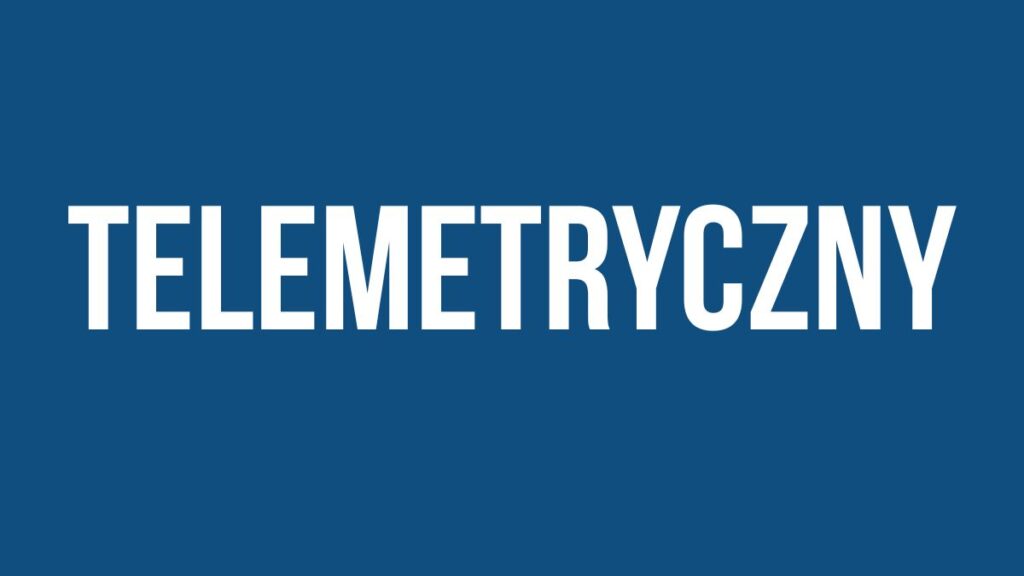In today’s data-driven world, understanding your business operations is more crucial than ever. Enter telemetryczny—a game-changing approach to collecting and analyzing data in real time. Whether you’re monitoring systems, tracking user behavior, or optimizing processes, telemetryczny offers the insights you need to make informed decisions.
But what exactly does it entail? How can you set it up effectively? And what tools are essential for a successful implementation? This guide will walk you through everything from the fundamental concepts of telemetryczny to best practices that ensure you get the most out of your data collection efforts. Get ready to unlock new levels of efficiency and insight that could transform how your organization operates!
Understanding Telemetryczny and its Purpose
Telemetryczny is more than just a buzzword; it’s a crucial tool for modern businesses. At its core, telemetryczny refers to the automated process of collecting and transmitting data from remote sources. This allows organizations to monitor systems in real time.
The primary purpose of telemetryczny lies in visibility. It provides insights into how your systems perform and where potential issues may arise. By capturing metrics such as performance speed, error rates, or user interactions, companies can make proactive adjustments.
Moreover, telemetryczny facilitates informed decision-making. Instead of relying on gut feelings or outdated reports, organizations harness live data to guide their strategies. This leads not only to increased efficiency but also improved customer satisfaction.
By understanding telemetryczny’s role, businesses can begin leveraging its power effectively and stay ahead in a competitive landscape.
Essential Tools for Setting Up Telemetryczny
To effectively set up telemetryczny, you need the right tools at your disposal. Start with a robust data collection platform. Look for options that can handle large volumes of data and offer real-time processing capabilities.
Next, consider using APIs to integrate various data sources seamlessly. This allows for a more comprehensive analysis by pulling information from different systems into one place.
Don’t overlook visualization tools either. They help transform raw data into meaningful insights through graphs and dashboards, making it easier to spot trends or anomalies.
Ensure you have strong security protocols in place. Protecting sensitive information is crucial when dealing with telemetryczny data streams. With these essential tools in hand, you’re better equipped to harness the full potential of telemetryczny in your operations.
Techniques for Efficient Data Collection and Analysis
Efficient data collection and analysis are crucial for any telemetryczny system. Start by defining your key performance indicators (KPIs). Clear objectives guide the entire process, ensuring you gather relevant information.
Utilize automated tools to streamline data gathering. By integrating APIs or sensors, you can capture real-time insights without manual intervention. This not only saves time but also reduces human error.
Data normalization is essential when working with multiple sources. Standardizing formats allows for easier comparison and integration of datasets. Ensure that all incoming data adheres to these standards before diving into analysis.
Embrace visualization techniques to make sense of complex datasets. Graphs, charts, and dashboards transform raw numbers into understandable insights, facilitating quicker decision-making.
Consider regular audits of your data practices. Continuous improvement helps maintain high-quality metrics while adapting to evolving business needs in the telemetryczny landscape.
Best Practices for Implementing Telemetryczny
To implement telemetryczny effectively, start by defining clear objectives. Understand what data you need and how it aligns with your business goals.
Next, choose the right tools that suit your specific requirements. Investing in user-friendly software makes a significant difference. This ensures team members can easily navigate the system.
Regularly update and maintain your data collection processes. Outdated methods can lead to inaccuracies or missed insights.
Training is crucial too; ensure all relevant staff are well-versed in using telemetryczny systems. Confidence in these tools boosts overall productivity.
Encourage a culture of feedback within your organization. Continuous improvement based on real-time data will enhance decision-making and drive growth over time.
Common Challenges and How to Overcome Them
Implementing telemetryczny can present several challenges. One major obstacle is data overload. Organizations often struggle to manage excessive information, leading to confusion and inefficiency.
To tackle this, prioritize your metrics. Focus on the key performance indicators that truly matter to your objectives. This will streamline your analysis and help you make informed decisions.
Another common issue is integration with existing systems. Legacy software may not easily accommodate new telemetry tools.
Consider investing in flexible solutions designed for seamless compatibility. Upgrading infrastructure can also enhance adaptability when introducing telemetryczny processes.
Team resistance can stifle progress. Employees might feel overwhelmed or unsure about adopting new technologies.
Encourage a culture of learning by offering training sessions and support resources. Involving staff early on fosters acceptance and enthusiasm for the changes ahead.
Case Studies: Real-Life Examples of Successful Telemetryczny Implementation
One notable case of successful telemetryczny implementation is in the healthcare sector. A hospital integrated a telemetry system to monitor patient vitals remotely. This innovation reduced response times during emergencies, leading to better patient outcomes and increased satisfaction among families.
In the tech industry, a software company utilized telemetryczny to track user behavior within its applications. By analyzing this data, they made targeted improvements that enhanced user experience and boosted retention rates significantly.
Retail has also seen major benefits from telemetryczny practices. A popular e-commerce platform deployed real-time analytics on customer interactions. This allowed them to tailor marketing strategies effectively, resulting in higher conversion rates and increased sales revenue.
These examples illustrate how diverse sectors leverage telemetryczny for operational success. Each instance highlights innovative approaches tailored to specific challenges faced by organizations today.
Conclusion: The Benefits of Using Telemetryczny in Your Business or Organization
Telemetryczny offers a range of benefits for businesses and organizations looking to enhance their operational efficiency. By implementing telemetry systems, you gain real-time insights into your processes and performance. This can lead to quicker decision-making and more informed strategies.
Data-driven decisions are increasingly crucial in today’s fast-paced environment. Telemetryczny provides the tools necessary for thorough data collection, enabling teams to analyze trends and identify areas needing improvement. The ability to monitor key metrics allows organizations to pivot when needed, ensuring they stay competitive.
Additionally, enhanced visibility into operations fosters transparency among team members. This not only builds trust but also encourages collaboration as everyone is on the same page regarding goals and challenges.
On a broader scale, leveraging telemetry can contribute significantly to customer satisfaction. Understanding user behavior through collected data helps tailor services or products that meet client needs effectively.
Adopting telemetryczny isn’t just about adopting new technology; it symbolizes a shift towards smarter business practices that prioritize responsiveness and adaptability in an ever-evolving market landscape.







